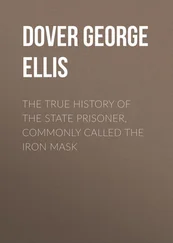Bishop Guy’s work is a substantial Latin poem called Carmen de Hastingae Proelio (the Song of the Battle of Hastings ). 6Although long known to have existed, his account of the battle was not rediscovered until 1826, when the archivist to the king of Hanover happened to stumble across two twelfth-century copies while researching in the Royal Library in Brussels. It was a fortuitous find. The Carmen was possibly written as early as 1067 and certainly before Bishop Guy died in 1074 or 1075. It gives us a distinctively French, but non-Norman, perspective on the events of 1066, a continental counterpoint to the Norman biases of William of Poitiers. Unlike the Norman sources, but intriguingly like the tapestry, the author of the Carmen portrays Count Eustace II of Boulogne as the hero at Hastings.
As the years went by further writers added their own accounts. An English monk named Eadmer, working at the abbey of Christ Church in Canterbury, wrote the Historia Novorum in Anglia (the History of Recent Events in England ) between about 1095 and 1123. 7Usually disregarded in favour of earlier sources, Eadmer’s brief account of the Norman Conquest in his History flatly contradicts the Norman background to 1066 and it deserves much greater attention than it has conventionally been given. Other twelfth-century writers followed Eadmer’s lead and showed a marked degree of sympathy for the conquered English, although they still justified the Norman victory as leading to improvements in standards of monasticism and morals in the country. In England there were John of Worcester, Henry of Huntingdon and William of Malmesbury; in Normandy there were Orderic Vitalis in the first half of the twelfth century and in the second the Jersey-born poet Wace. 8
Orderic Vitalis was familiar with the complete version of William of Poitiers’ Gesta , which he used extensively, though not without discretion, and he provides us with the most detailed and useful of the twelfth-century accounts of the Norman Conquest. Born near Shrewsbury in 1075 to an English mother and a Norman father, Orderic was placed by his parents in the Norman monastery of Saint-Evroul at the age of ten, ‘a weeping child’, he tells us, ‘unknown to all, knowing no one’. He spent his whole life as a monk there, devoting himself to researching and writing. He wrote a continuation of the history of William of Jumièges, and then, between 1115 and 1141, he threw himself into a much larger project, a history of the Normans, which he called his Ecclesiastical History. Orderic’s own beautifully neat copy of this work survives in the Bibliothèque Nationale in Paris. Divided in his sympathies between the England of his boyhood and the Normandy of his education and adult years, Orderic justified the Conquest of 1066 as bringing Church reform to England, but at the same time he did not flinch, where necessary, from criticising the brutality of the conquerors. He even makes William the Conqueror refer to himself as a ‘cruel murderer’ as he lies dying in 1087 and has him make the following rather uncharacteristic (and unlikely) admission: ‘I treated the native inhabitants [of England] with unreasonable severity, cruelly, oppressed high and low, unjustly disinherited many, and caused the death of thousands by starvation and war, especially in Yorkshire.’ 9
Written sources such as these are the bedrock of historical investigation. The story told in these black-letter records is exciting and revealing and puzzling. Yet when you close these books and pass to the Bayeux Tapestry your imagination still feels as if it has emerged out of the darkness of a cave into a world of sunlit colours. These busy little figures are not just eleventh-century cartoon characters stitched on to linen. They stand for real people, real people whose lives were changed, and in some cases ended, by the greatest of all events in English history. More than that, recorded in these threads are forgotten stories yet to be retold.
Конец ознакомительного фрагмента.
Текст предоставлен ООО «ЛитРес».
Прочитайте эту книгу целиком, купив полную легальную версию на ЛитРес.
Безопасно оплатить книгу можно банковской картой Visa, MasterCard, Maestro, со счета мобильного телефона, с платежного терминала, в салоне МТС или Связной, через PayPal, WebMoney, Яндекс.Деньги, QIWI Кошелек, бонусными картами или другим удобным Вам способом.











